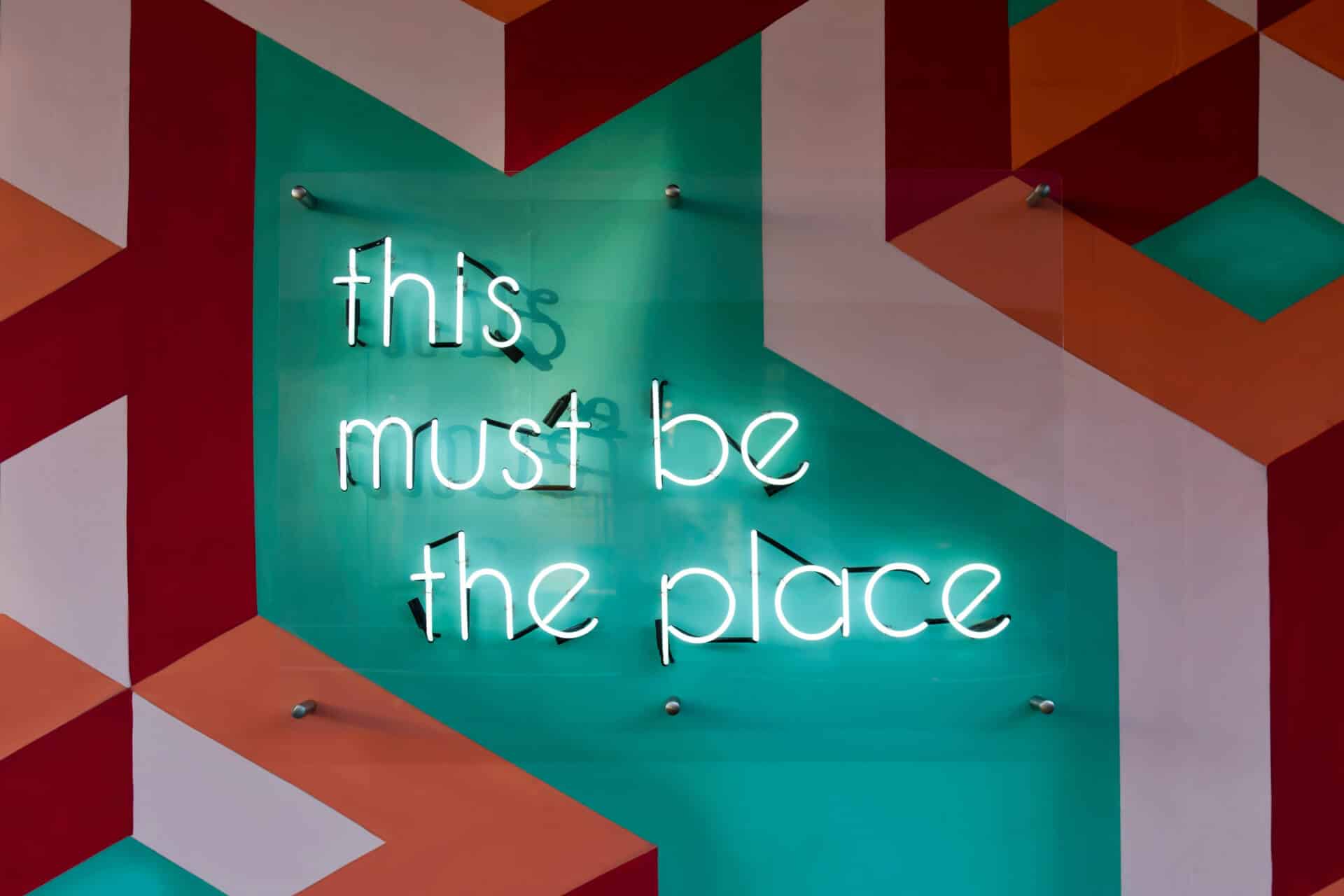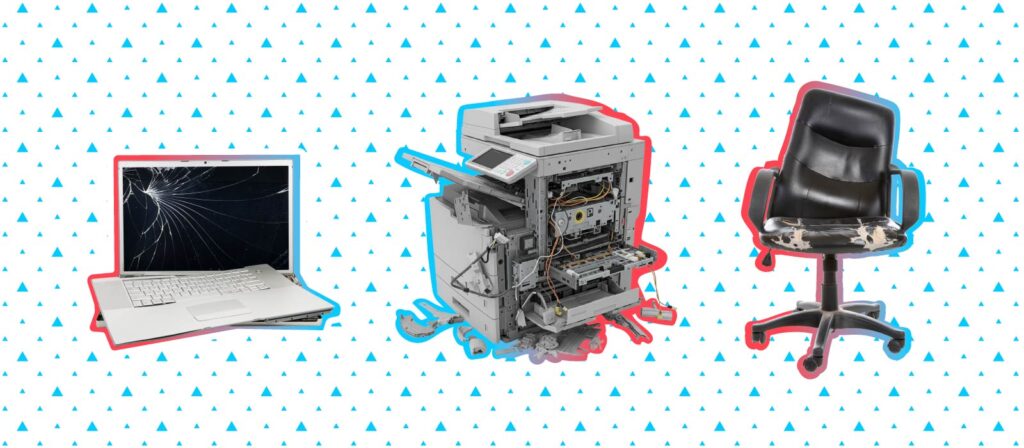Meeting Room Signage: Improving Office Efficiency with Digital Displays

Meeting room signage is a critical component of a well-functioning office, assuming it is clear, high quality, and preferably digital. When it is well-integrated with room booking software, digital signage can make it much easier for both employers and visitors to navigate the workplace.
In this article we explore digital meeting room signage and its benefits. We also cover our recommended digital signage solutions for the modern office.
What is meeting room digital signage?
Companies have always needed signage in the workspace. Signage is essential to both to provide critical information to staff and visitors, and to help keep track of room and desk bookings.
Digital signage automates these visual cues, so that information can be displayed on easily updated screens. We’ll cover the best options below.
Digital signage will typically be on a monitor or other digital screen, through kiosks, or through tablets with various mounting options.
Digital signage solutions can often integrate with an existing Integrated Workplace Management System (IWMS). As a result, these digital office signs can make managing hybrid work and other flexible working scenarios much easier.

Why use digital meeting room signage?
There are typically three uses for digital signage in an office or facility setting.
First, digital conference room signs show critical, real-time information about conference and meeting rooms. This can include room name or room status to show when they’re booked or in use. Ideally, these signs link with software to maximize their usefulness.
Digital signage displays are also handy in the reception area, where they can be specifically helpful in welcoming and directing visitors. This type of centralized signage can also share company news and events, and provide staff status information.
Finally, wayfinding and interactive maps have always been useful in the workplace. And are even more so in the post-pandemic environment, where physical distancing is paramount! More people are working remotely and therefore less familiar with the office.
Wayfinding can be as simple as directional signs around the office. Digital kiosks can further power wayfinding in larger facilities.
For example, Visual Directory® kiosks are an essential way for people to navigate their spaces at Shopify.
“Our people really rely on the interactive maps inside OfficeSpace to get wherever they need to go,” says Alicia Murrell, Workplace Experience Manager at Shopify.

What are the benefits of digital meeting room signage?
Of course there was a time before digital signage, when companies simply used pen and paper or simple door signs to keep track of office use and meeting spaces. So why can’t those older and simpler methods still work?
The reality is that even without the added complexities of the pandemic, managing employees and visitors in an increasingly dynamic and evolving office is a complex task. It’s one that requires collaboration in the workplace and robust facilities management (FM) solutions.
Yes, pen and paper may technically still work.
But a company’s existing room booking system can integrate with conference room digital displays. This can create a much more well-oiled and modernized office environment.
Namely, digital meeting room signage that integrates with an IWMS offers the following six key benefits.
1. Real-time status updates
Wandering around the office looking for an open conference room is a time killer, and it’s a particular ‘no-no’ in the post-pandemic office.
Meanwhile, digital meeting room signs can indicate at a glance whether a room is booked or in use. Digital displays can also help employees who need to find rooms with specific features.
And when signs link to room booking software, a mobile app, and/or the company’s calendar system, updates can happen in real time, even allowing for no-shows or last-minute venue changes.
In other words, this signage can dramatically maximize room availability and reduce wasted space, while also making it easier for employees to navigate the office in general.
2. Streamlined meetings
Better meetings start with better meeting room bookings.
That means facility managers (FMs) need to make it easy for employees to find, book, and check in to meeting rooms.
Digital signage that link to room booking software is the best way to streamline all aspects of meetings, taking room booking to the next level. Like Luke Anderson, OfficeSpace VP of Product and Strategy, insists, “it needs to be easy for employees to find what they need, book desks, and feel comfortable and productive.”
3. More visibility
One of the barriers to employees adopting hybrid work comes from a lack of visibility. If employees don’t know when their teammates are using the office, it makes it difficult to plan for collaborative work.
“If they can see other team members who are booked to come in, employees can know what they’re walking into on any given day,” says Luke. “That way they ensure they’re coming in when they can be their most productive.”
Ultimately, digital signage lets employees clearly see how their office is currently being used at any given time. And when it’s paired with other software, it can help them understand who is using the office, when. This can help them determine when and how they should be using it, too.
4. More support for remote workers
Increased visibility is one way that digital signage can support hybrid workers who may be using the physical office less and therefore be less familiar with the space.
Workers can check an interactive map like Visual Directory from anywhere. Remote workers can therefore use it to see who will be in the office on a given day, along with any meeting space that will be available. This can help them better decide which days to come into the office.
Wayfinding can also be critically important for these employees, who, again, may be less familiar with the office space, especially any new layouts.
Moreover, good room booking software can also integrate with Zoom, making it easier for remote workers to attend in-office meetings.
5. Accommodate canceled and last minute bookings
If only every meeting ever scheduled went off without a hitch. Real office life is typically much messier.
Thankfully, room booking and desk booking software can be integrated with existing software like Slack, Microsoft Teams, and Google Calendar, as well as with a mobile app. This means that employees can book—and cancel—meeting rooms and desks on the fly. This can be particularly useful for agile working situations.
6. Provide occupancy insights
And while real-time and streamlined room and desk bookings are great, the real benefits of this software and signage integration often come from their long term data.
Specifically, FMs can collect and use analytics data to better understand how people are actually using rooms (and desks). This can help them make more informed decisions for their companies and employees going forward.

Choosing the right digital signage for meeting rooms solution
There are many clear benefits to using digital meeting room booking displays. Of course to realize these benefits, companies need good digital platforms.
Here are five suggestions for digital signage for offices. While these are available at a variety of price points, note that this is usually a wise, long-term investment for an organization.
Commercial monitors and tablets for digital room signage
Assuming you have the available budget, commercial monitors are typically the best choice for digital displays. Remember, this is a screen that needs to be continually ‘on,’ so choosing hardware with this use in mind will better suit the task.
Here are five well-vetted commercial monitor options:
- Crestron Room Scheduling: while almost any digital display from highly regarded Crestron Electronics will likely do the trick, their Room Scheduling devices in particular have the potential to connect with software to make booking and monitoring meeting rooms easy.
- Elo’s 0702L 7″ Touchscreen Monitor: Elo’s entire touchscreen monitor lineup is thin, attractive, and easy to integrate with existing software. Elo devices are easy to mount and come in a variety of sizes, and they also carry medical-grade options.
- LG Touch Screen Displays: choose from a variety of well-sized, interactive displays that are particularly well-suited for reception areas and wayfinding.
- Mimo Adapt-IQ 10.1″ Digital Signage Tablet: many offices will like the look and feel—and pricing—of smaller and portable tablets for their signage. Mimo makes accessible commercial tablets that are fast, reliable, and powerful.
- Jarvis Commercial Android Tablet: similarly, Jarvis interactive tablets are built for rigorous, commercial use, coming in a variety of sizes.
iPad and Android tablets
Depending on their budgets and preferences, many companies opt for tablets designed for personal use—namely iPads and various Android devices.
There’s no doubt these can work well in some situations. They can even be a ‘cool’ and cheaper option to commercial signage.
It’s important to find the device that meets your budget and needs; however, be aware that these devices aren’t necessarily meant for commercial, continual use. They may end up being less user-friendly than desired in an office setting depending on the use of the display.

Simplifying meeting room bookings
Counterintuitively, the most simple meeting room booking software does it all. In other words, this software is best when it’s part of one system that deals with all aspects of using the office, and that is easy to access everywhere by everyone on the team.
Room booking should be easy. The best solution is one with the potential to integrate with desk booking, move management, and request management options, along with a suite of tools FMs can use to better organize the workspace.
Because all this software can be one powerful platform, instead of across multiple apps, it can help create a simple, cohesive employee experience and a more productive workspace.
How effective is digital signage?
Digital signage is only as effective as the software it displays.
Remember that signage is about communicating a message. That means in order to be effective, it must have a clear message in the first place. This should come from FMs organizing their office in a thoughtful and user-friendly way that keeps employees’ real needs top of mind.
OfficeSpace can help set up meeting room signage that works for your space. Reach out for a free demo.
Photos: Tim Mossholder, Andrea Piacquadio, Andrea Piacquadio, Karolina Grabowska, Dose Media,



